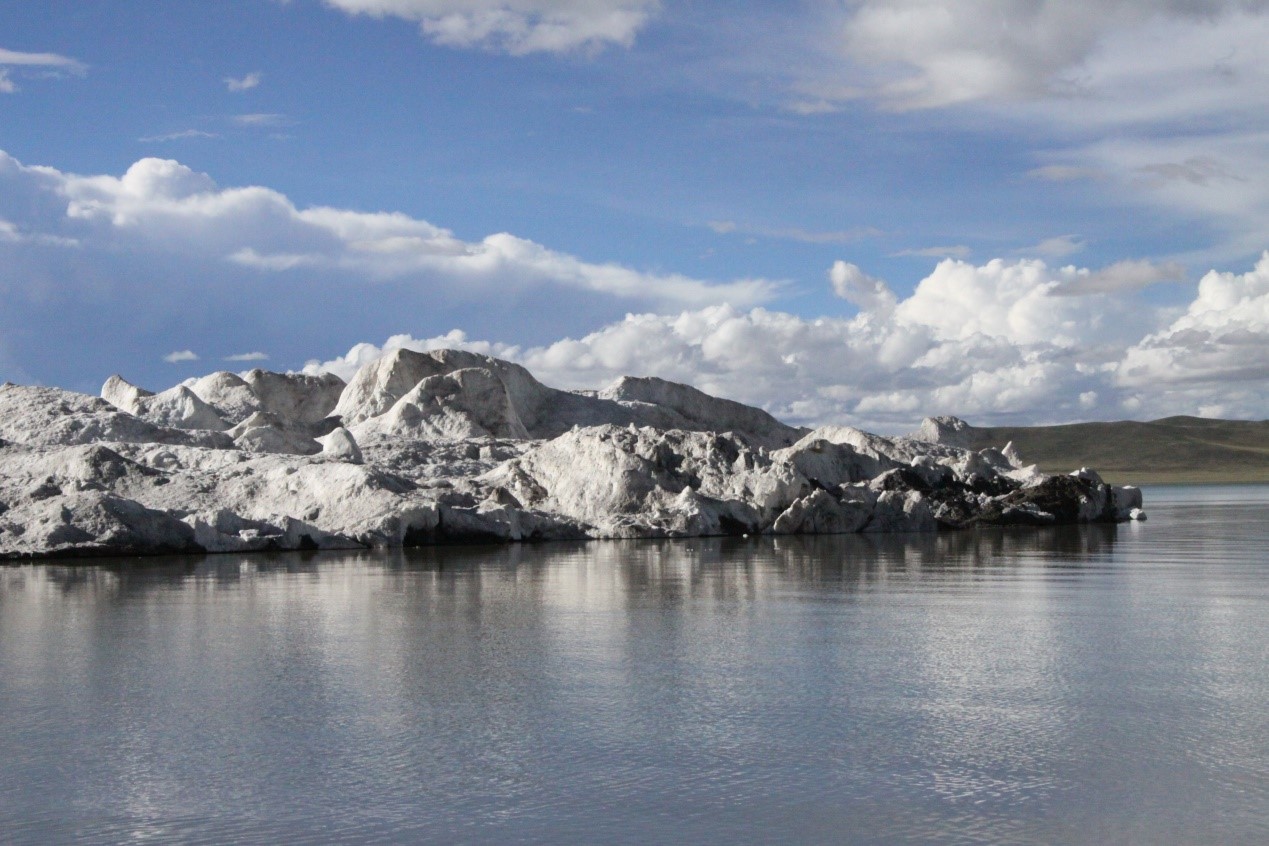
Glaciers are not only melting, but also collapsing in the Third Pole region. In 2016, two glaciers in the western Third Pole's Aru Mountains collapsed, one after another. The first collapse caused nine human casualties and the loss of hundreds of livestock. However, that may not be the end of the catastrophe.
According to a study recently published in The Cryosphere, meltwater from ice avalanches has been filling downstream lakes in a way that may cause previously separated lakes to merge within the next decade, thus disrupting the function of ecosystems in the region.

Effects of glacier collapse on downstream lakes in the western Third Pole (Image by TPE)
"The collapse of Aru glaciers has both short-term and long-term impacts on downstream lakes," said Dr. LEI Yanbin, lead author of the study and a researcher at the Institute of Tibetan Plateau Research (ITP), Chinese Academy of Sciences.
According to LEI and his team, the first glacier collapse sent at least 7.1 million cubic meters of ice, the volume of approximately 2,840 Olympic-size swimming pools, into the downstream Aru Co Lake. The avalanche of ice lowered the lake’s surface temperature by 2-4 degree centigrade for two weeks and reshaped the near-shore lakebed. As the ice from the avalanches started to melt, it contributed 23% to the volume increase of Memar Co Lake, a neighboring terminal lake that has risen three meters from 2016 to 2019 - a rate that is 30% faster than that from 2003 to 2014.
The study was enabled by the glacier-meteorology-lake observation system built by a group of scientists led by Prof. YAO Tandong, co-chair of Third Pole Environment (TPE) and co-author of the study.
YAO and his group were the first scientists to arrive at the scene after the glacier collapse, and have since been working to reveal why and how the glaciers collapsed, as well as trying to understand the impact of the collapses on downstream lakes.
Their research found that ice avalanche debris from the first glacier collapse had nearly melted away by the summer of 2017, but 30% of the ice from the second glacier collapse still remained as of the end of 2019. "If Memar Lake continues to expand at this rate, it will merge with the Aru Co Lake in 7-11 years," said YAO. "A scenario like that could significantly change the regional landscape and disrupt local ecosystems. That's why we need to watch the two lakes more closely in case of such changes."

Debris from glacier collapse in Aru Co Lake (Image by LEI Yanbin)

86-10-68597521 (day)
86-10-68597289 (night)

52 Sanlihe Rd., Xicheng District,
Beijing, China (100864)

